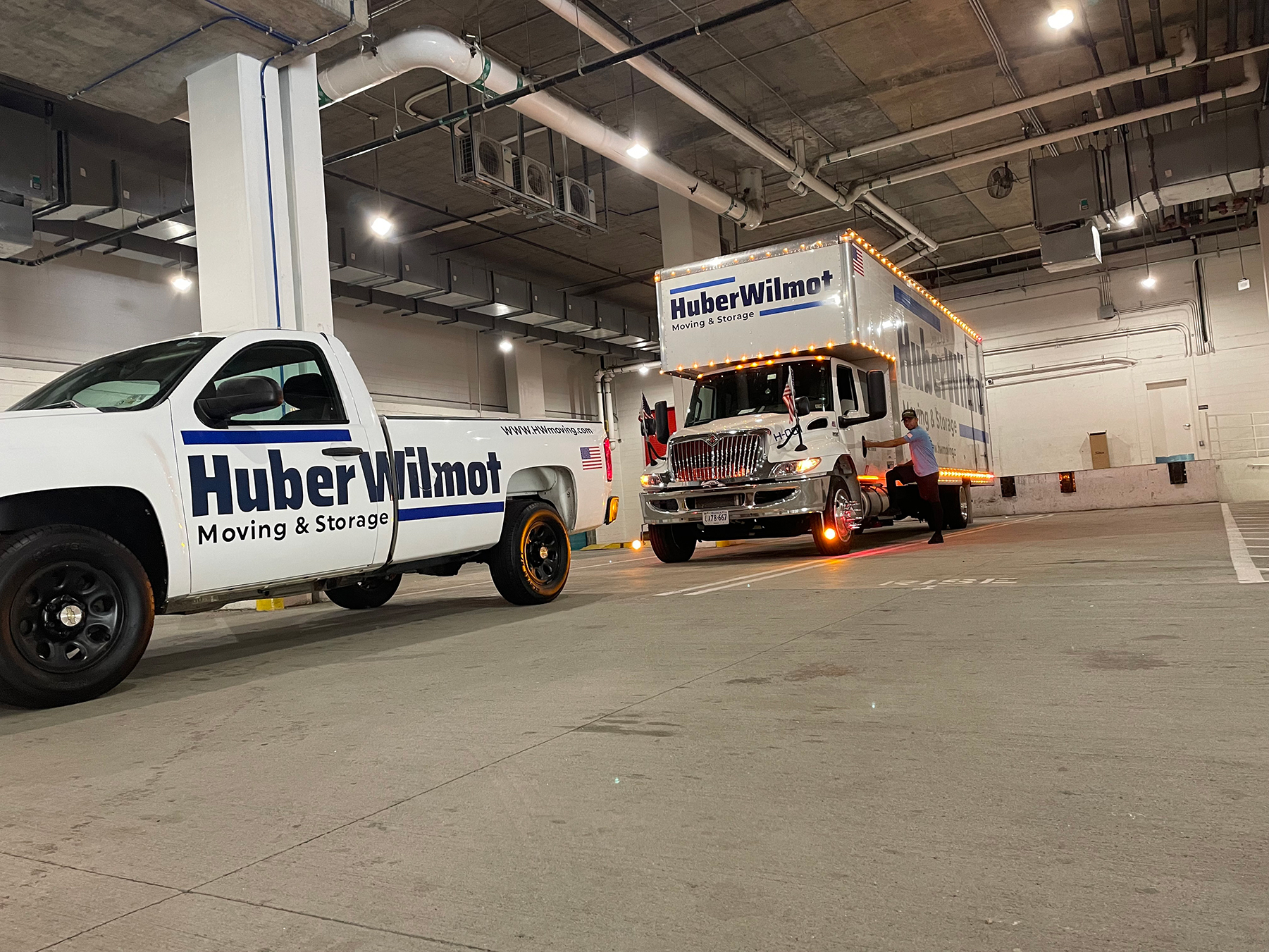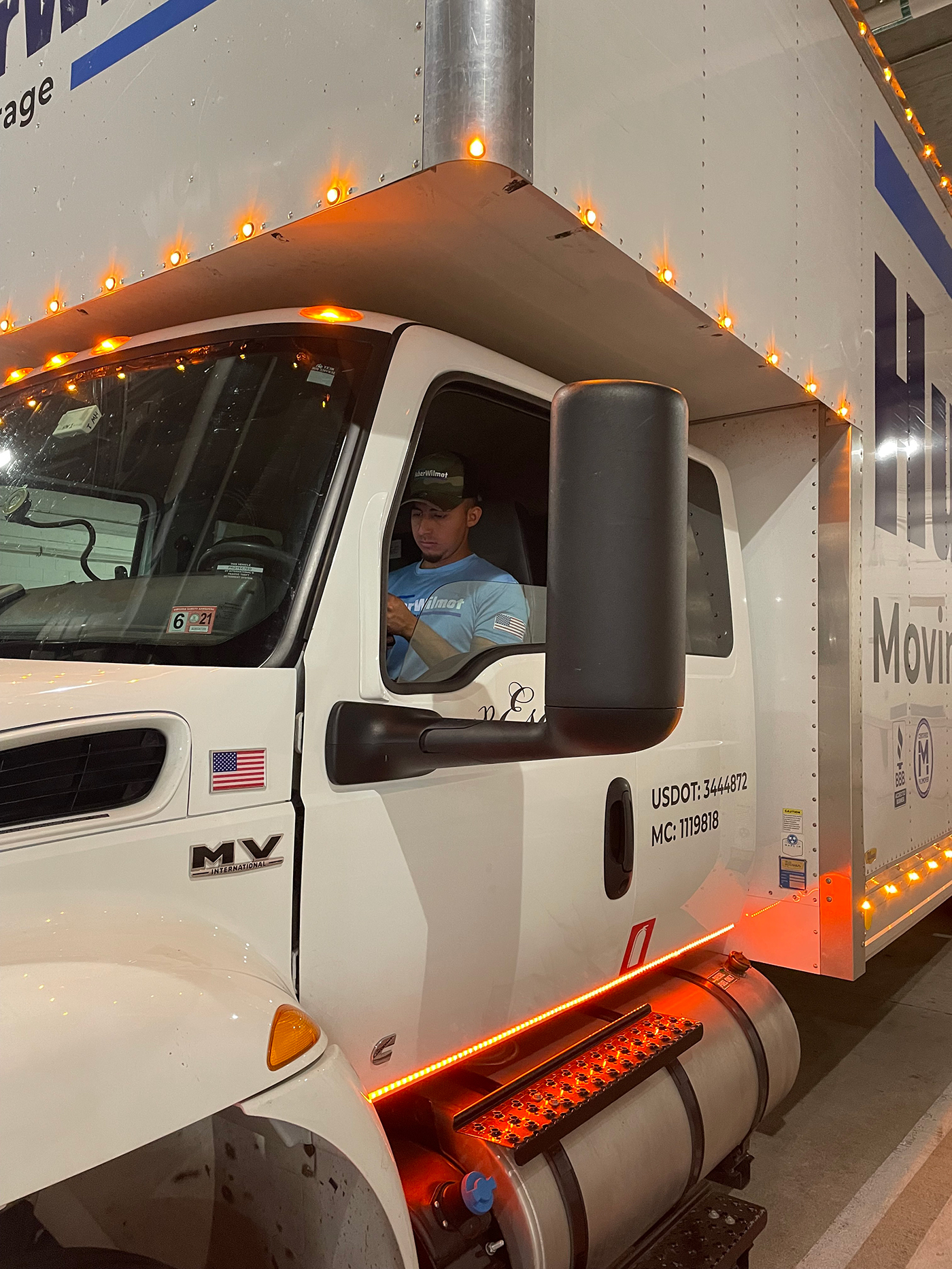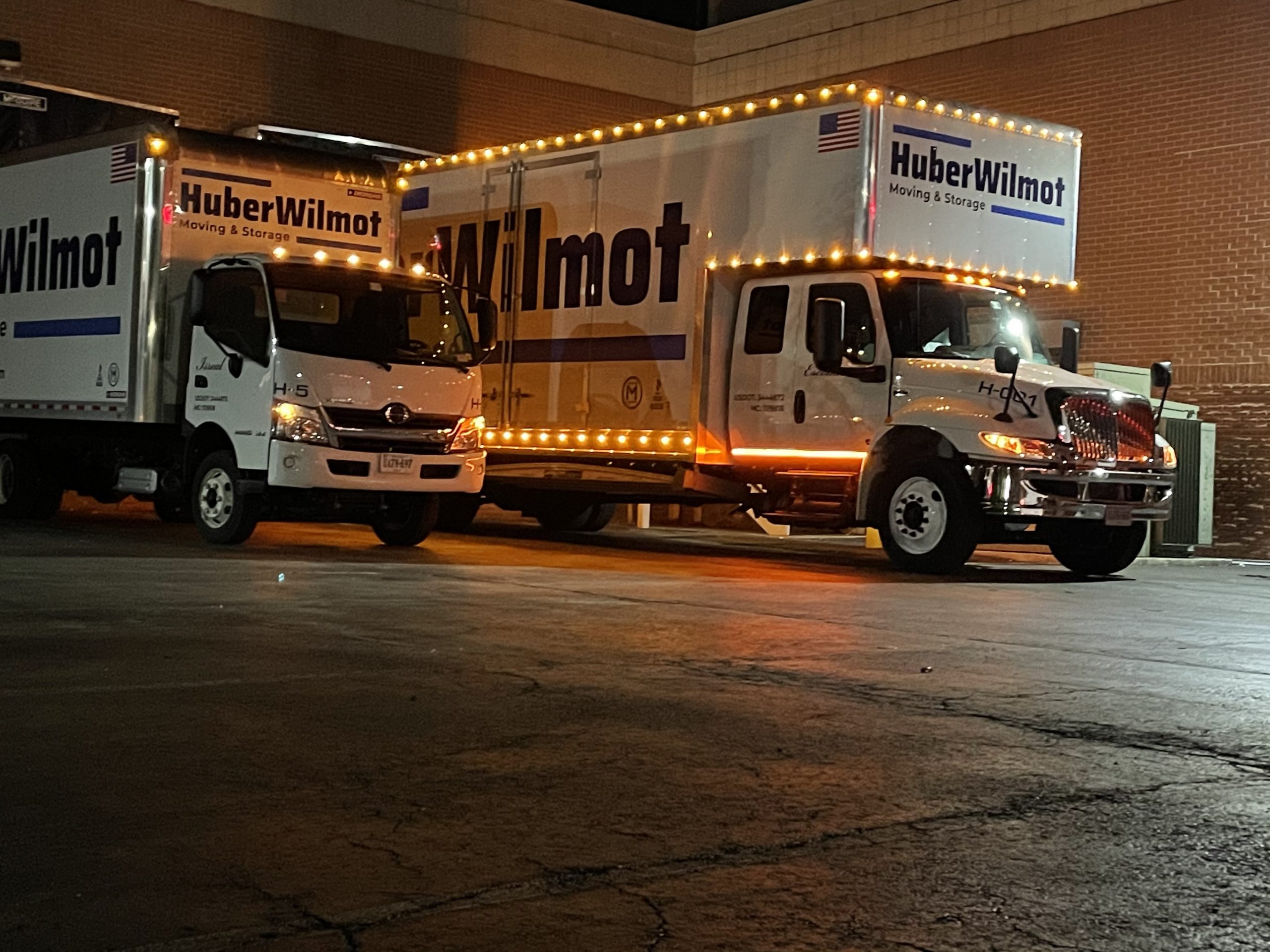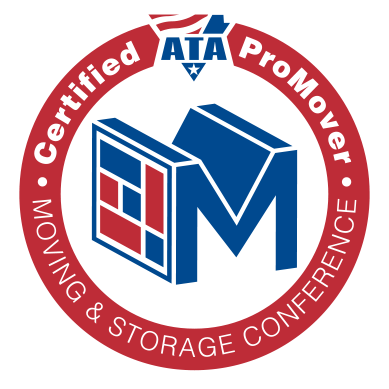Moving FAQs
Moving FAQs
PRE-MOVE
When is the best time to move?
The busiest times for moving companies are during the summer months, taking place roughly between May 15 – September 15. Near the ends of these months, the volume of shipments is extremely heavy— this tends to be the case for all professional relocation and moving companies.
It’s important to take all factors into consideration when deciding on the best time for you to move. If you have some flexibility in your schedule, providing the moving company with a five-day window for loading your shipment can be greatly beneficial. This will allow the individuals who schedule your drivers and moving crew greater flexibility when scheduling your move. If possible, try to be flexible with your arrival time frame as well—keep in mind that you most likely are not the only shipment the truck is currently moving. Offering a flexible time frame can make a world of difference and make your entire process of moving much easier.
How do I select which moving companies will provide me with a free moving estimate?
Your first step is determining if you need a full-service moving company. It’s a good idea to research local, national, and long-distance moving companies— ask your neighbors, friends, coworkers, and family members if they can make recommendations. Investigate each of the movers you select with the Better Business Bureau. Good service is the best measure of a good mover!
When should I begin contacting moving companies for free moving estimates?
Try to provide the moving companies with as much notice as possible, especially if you are moving during a busy summer season, as noted above. Six weeks from the actual move date is a great time frame for estimators to come into your home and complete a visual survey of your household goods shipment. It is also a good idea to add even more time to plan, if you are obligated by your employer to submit moving estimates for corporate relocation. Try to decide which mover you will use at least four weeks from your actual load day. Additionally, call the mover to confirm your booking and schedule your packing, loading and delivery dates. This time frame can be shortened if you are moving outside of the peak moving season (September 15 through May 15 are considered “off-peak” months, which generally featureless moving traffic).
What happens when a Moving and Storage Advocate comes to my home?
The Moving and Storage Advocate will arrive at your home to complete the visual survey of your items. Once this is completed, he or she will calculate the weight, packing cost and any other charge related to your move—please remember that the Moving and Storage Advocate must clearly see what you are moving in order to provide you with an accurate estimate. Crawl spaces, attics, and cluttered closets can often be deceptive, so organize your house well before the Moving and Storage Advocate arrives.
Don’t be alarmed—it is normal for a Moving and Storage Advocate to go through all your cabinets and closets, or even look under beds and on top of cabinets. He or she must be able to completely see what is moving and possibly needs packing. If you know of items that are out of view, be sure to point them out to the Moving and Storage Advocate. In addition to this, if there are items you will be eliminating, be sure to point them out as well.
One word of caution that can save you a great deal of trouble on loading day is to get rid of all items you do not plan to move—otherwise, there may not be enough space for your shipment. This will not occur on one or two small items, but if you anticipate eliminating an entire bedroom suite and do not do so, it is quite possible that this could violate the integrity of your binding estimate, or cause the driver to run out of space.
PRICING & PAPERWORK
What is a binding estimate?
A binding estimate is a contract that specifies, in advance, the precise cost of moving based on the services requested or deemed necessary at the time of the estimate. If additional moving services are requested or required at either origin or destination, then the total cost will increase.
What is a non-binding estimate?
A non-binding estimate charges you according to the actual weight of your shipment, along with the cost of any moving services that are performed (you will still go through the estimation process to determine what your shipment may cost). To verify the weight of your shipment, the driver will weigh his trailer prior to loading your shipment. Once your shipment is on board, the driver will weigh his trailer again. All other moving charges will be calculated at your origin’s address. If there are any additional charges that are incurred during the delivery process, the driver will provide you with the additional cost (although this is a rare event, it can occur in certain cases).
How is the cost of my shipment calculated?
If you are moving to a different state, the charges will be based on the weight of your shipment and mileage—these are referred to as the transportation charges. There are a variety of different moving charges that can potentially appear on your estimate, so be sure to ask your Moving and Storage Advocate to explain each charge for you. Some additional charges that may appear include packing, crating, valuation or coverage, bulky article charge (for oversized items), and extra labor. Again, please be certain you fully understand these charges so that you can accurately compare the estimates you receive.
How should I pay and what are the payment methods?
Tariff provisions require that all moving charges be paid before your shipment is unloaded at the destination. Payments can be made using cash, certified check, or money order. Other payment options, such as a credit card, can be arranged with your professional moving service provider. Your charges may be charged up to two days prior to load to prevent your delivery from being delayed. Discuss these options with the Moving and Storage Advocate and/or the customer service representative assigned to your shipment. If your employer is paying for the move, the employer may pre-arrange to be billed via invoice. Whatever works best for your situation is great—just be sure to have the details worked out prior to when packing and loading begins –if the method of payment is not established prior to load day, it can cause you problems on delivery day.
What is an order for service?
All movers are required to prepare an order for service before they transport your shipment. The order for service provides you with written confirmation of the moving services that you requested to be performed in conjunction with your shipment. It also lists the agreed upon dates for the pickup and delivery of your shipment and amount of valuation that you requested, along with any special services that you ordered. It also features a place and telephone number where the mover can contact you during the move.
Additionally, the order for service shows the charges that you will be assessed for your household move or corporate relocation. If you are moving under a non-binding estimate, the order for service will indicate the amount of the estimated non-binding charges, the method of payment for the charges and, in cases where the actual charges exceed the non-binding estimate, the maximum amount that you are required to pay at the time of delivery in order to obtain possession of your shipment (you will have 30 days following delivery to pay the balance of the charges due). If you are moving under a binding estimate, the order for service will show the charges that you will be required to pay at delivery, based on the binding estimate and the terms of payment. You and your mover must sign the order for service.
What is a Bill of Lading?
Every mover is required to prepare a bill of lading for every shipment transported. The bill of lading is the receipt for your goods and the contract with your mover for their transportation. The driver who loads your shipment must give you a copy of the bill of lading.
It is your responsibility to read and understand the information on the bill of lading before you sign it. The bill of lading identifies the mover and specifies when the transportation is to be performed. It also specifies the terms and conditions for payment of the total moving charges, along with the maximum amount required to be paid at the time of delivery (if you are moving under a non-binding estimate). Information regarding the valuation of your shipment and the amount the mover will be liable for in the event of loss or damage is also shown.
What is an Inventory?
The driver will generally inventory your shipment as he or she loads it (although it is not required by law). When completed, the inventory provides a detailed, descriptive listing of your household goods, along with the condition of each item when received by the mover.
Be sure that everything listed on the inventory is correct. This is not always the easiest task, as you will find things written on the inventory such as “PBO,” which means “packed by owner.” The contents of this carton cannot be listed, as the driver is simply not able to see inside each box. You will also sometimes find “CP” on a line item in the inventory, which means “carrier packed” container.
You may also notice, in the middle column on your inventory form, a line that has many seemingly random letters and numbers associated with a specific item. This is where a driver uses inventory code to make note of the condition of an item. To understand this code, you can refer to the top of the inventory sheet for a legend that will explain what each code means. For example, SC means scratched; C means chipped; the number 3 refers to the right side of piece; and 8 refers to the top of the piece. This is a simple (and consistent) way for the driver to make note of any irregularities or existing damage.
Remember, this inventory is for you to keep track of what is loaded, and the condition of each item. If damage occurs on a certain piece during the loading process, make a note of the inventory tag number on that item and indicate it in the far-right hand column on the line that corresponds with that piece. This is the document that will be scrutinized when the claims process is initiated, so it is important to have the damage clearly noted.
This inventory should also be used at-destination when your shipment is delivered. Use the inventory to verify the articles that are delivered and, again, note an exception to the condition of any items as they are brought into your home. Point out the damage to the driver.
What often occurs is that a piece of furniture has been in your home for many years and you grow accustomed to looking at it in a certain place and in a certain light. When you bring that same piece into your new home, you may notice damage that may have been there for a long time. The driver will have noted the scratch or chip at your origin residence. If you are not sure if it was existing damage or new damage, ask your driver to explain the condition of the piece as he noted it on the inventory during the loading process. This is the quickest way to distinguish new damage from what was there all along.
Our drivers are incredibly careful about the way they handle your items, and the inventory is their safeguard against potentially fraudulent damage claims. Use this inventory to your advantage in making sure that you are protected, just as the driver uses it to protect himself or herself.
PACKING
Can I pack anything in the drawers of my dresser or desk?
All loose items must be packed in boxes to prevent loss or damage while moving. It is recommended that you pack all items and leave the drawers empty.
Will the driver load all the boxes that I packed?
Yes, if the driver deems them safe for transport.
How should I pack my waterbed?
Waterbeds need to be drained completely, while fiber-filled waterbeds need to be professionally vacuum-drained in advance of your moving date.
Can I pack and move my plants?
Most moving companies will not take your plants. The stress and heat of being inside the moving trailer usually causes them to die. Many states do not allow the entry of plants while other states will admit plants under certain conditions. There are some states that have no regulations at all. Be sure to understand your state’s regulations prior to moving the plants in your own vehicle.
What should I do with my jewelry and other valuable items?
Items of extraordinary value such as jewelry, money, antiques, and stamp collections can be included in your shipment, if you notify your local moving and storage
of these items before packing and moving day. It is strongly recommended that you carry irreplaceable and expensive articles with you or make alternate arrangements for their transport.
In the moving industry, items worth more than $100 per pound are articles of “extraordinary value.” To be assured that a claim involving these articles is not limited to minimal liability, complete and sign your mover’s high-value inventory form. Also, be sure to sign the “Extraordinary Value Article Declaration” box, if applicable, on your Bill of Lading.
Each mover has a slightly different procedure to follow as it relates to high-value items. Ask your Moving and Storage Advocate to provide you with an explanation of their company’s process. This is a confusing (but important) task, so be sure that you clearly understand the rules prior to load day.
How do I prepare my appliances for moving?
Appliances such as washers, dryers, and refrigerators must be disconnected, and the washer must have a stabilizer installed. Again, your estimator can help you understand how these items are properly serviced. All local moving companies have business relationships with local service providers that handle this type of service, however full-service moving companies and national moving companies will also be able to provide all the moving services you require. Be sure you know who your mover will be using, as you will need to let these people into your home to provide the service.
How will you protect my upholstered furniture?
We use a special material called stretch-wrap. It is a heavy, clear-plastic wrap that protects your furniture from being soiled.
CLAIMS
How do I file and receive my settlement on my claim?
Claims are always unpleasant – no one wants to have to deal with the problem, but damage sometimes does occur when moving, and claims are an inevitable result. The best advice is to read and understand the claims-settlement procedure prior to moving—it is important that you understand your coverage and how to proceed through the claims process.
Claims adjusters are people with a difficult job—it is better to approach them with kindness than anger. Please understand your moving coverage and be certain to have the proper documentation in the form of an inventory with the damage noted.
Valuation of Coverage
Am I protected against loss or damage while my goods are in transit?
Yes, but how much protection you have and its cost to you depends upon the valuation coverage you selected. This can be one of the most confusing aspects to moving but it is important that you understand what is being provided to you.
The valuation option you choose determines the basis upon which any claim will be adjusted and the maximum liability of the carrier. The liability of a carrier for loss or damage is based upon the carrier’s tariffs, as well as federal laws and regulations that have certain limitations and exclusions. Valuation is not insurance. This is important to understand. It is the liability of the moving company. Check with the provider of your homeowner’s insurance to find out if you are covered for moving. Often you will find that you are.
- Released Value – This is the most economical as there is no additional cost. However, this option provides only minimal protection and is not sufficient coverage for most shipments. It will pay you $.60 per pound per article if lost or damaged while moving. That means a piece of furniture weighing 75 lbs would receive a settlement of $45.00. You will be asked to initial the bill of lading if you select this coverage. The only place this is applicable is if your insurance policy covers your goods for their entire value and this would be considered supplemental coverage for your move.
- Full Maximum Value Protection – This is your most comprehensive coverage. You may hear it referred to as “full replacement value” as well as “full value protection” by other van lines. If you elect to purchase full value protection, articles that are lost, damaged, or destroyed will be either repaired or replaced with like items, or a cash settlement will be made for the current market replacement value, regardless of the age of the lost or damaged item. Depreciation of the lost or damaged item is not a factor in determining replacement value when the shipment is moved under full value protection.
The cost of full value protection may be subject to various deductible levels of liability that may reduce your cost. Ask your mover for the details of their specific plan.
THE MOVE
How do I prepare my home and myself for move day?
Your mover may ask you to choose several consecutive days during which your goods may be loaded. The number of days in what is referred to as a “load spread” depends upon the size of your shipment and the time of the year when your shipment is loaded. Remember to try and remain flexible during the busy moving season by allowing for three to five extra days on your load spread to have a better chance of securing a truck and driver to load your shipment.
The customer service representative and/or driver will contact you at least 24 hours prior to load day to let you know the time of arrival. Be sure to let them know of any changes that have taken place that may affect loading day. A good example of changes that may take place is that the street in front of your home is under construction, preventing the large over-the-road truck to get near your home. Or possibly, you haven’t completed packing due to an unanticipated event. Contact your mover as soon as possible so that they can send out professional packers to complete the job for you.
Make sure your home is ready for the crew. Move anything off the porch and walkways that may obstruct movement of your goods out of the home. Take doors off the hinges if you know certain items will not fit through. Remove all small throw rugs from traffic areas that could cause the driver or crew to trip or slip.
Offering water, Gatorade, or other soft drinks on hand to the driver and crew, especially on a hot summer day, is an incredible gesture and, although our drivers come prepared, they will be grateful for your thoughtfulness.
Our drivers will prepare the home with runners, door jamb protectors, and railing protectors if applicable. This will help save on the little knocks that may occur during the loading process.
How will I know when my shipment is going to be delivered?
Your driver will contact you 24 hours before delivery. The moving company will assign a customer service representative as your primary contact and will be able to track your shipment and provide you with an update on the date that your goods will arrive.
Be certain to provide the driver with all your contact information—the phone number at the new home is only good if there is a person there to take the call. If you can be reached at work, a hotel, a temporary residence, or by email, please let the driver know. If you will be impossible to reach, it is encouraged to make arrangements with a friend or family member to serve as the liaison between you and the driver and provide the driver with that contact information.
Did you know...?
How do I file and receive my settlement on my claim?
Claims are always unpleasant – no one wants to have to deal with the problem, but damage sometimes does occur when moving, and claims are an inevitable result. The best advice is to read and understand the claims-settlement procedure prior to moving—it is important that you understand your coverage and how to proceed through the claims process.
Claims adjusters are people with a difficult job—it is better to approach them with kindness than anger. Please understand your moving coverage and be certain to have the proper documentation in the form of an inventory with the damage noted.


















